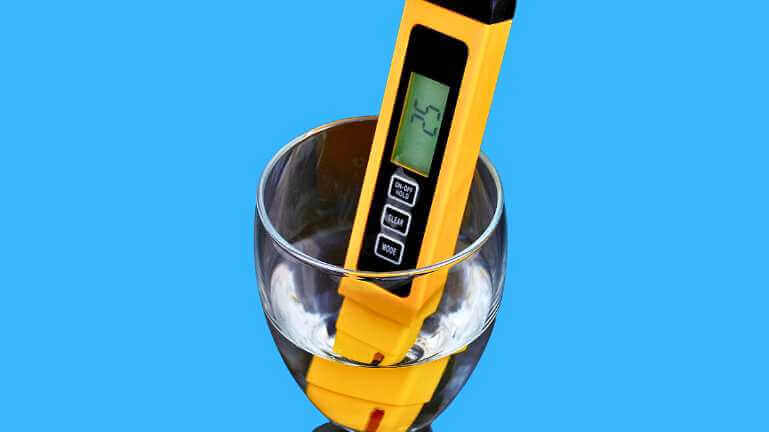Yes, ZeroWater filters can remove fluoride from tap water. The ZeroWater 5-stage filter can lower fluoride levels in drinking water, removing up to 91% of fluoride from tap water. Additionally, the Premium 5-Stage Ionization Exchanger Filtration System can remove up to 99% of fluoride.
Water is the essence of life, and ensuring its purity is paramount for our health and well-being. One of the primary ways to ensure the safety of our drinking water is through water filtration.
This process not only removes harmful contaminants but also improves the taste and odor of the water. However, not all elements filtered out are universally agreed upon as harmful. One such element that has been at the center of debate worldwide is fluoride.
While many tout its dental health benefits, others raise concerns about its potential adverse effects, leading to a significant controversy surrounding fluoride in drinking water.
Key Takeaways:
- ZeroWater’s filters have been independently tested by an EPA-certified laboratory, which confirms that they remove a range of contaminants, including fluoride.
- Fluoride is a naturally occurring mineral that is added to tap water to help prevent tooth decay. However, overexposure to fluoride can lead to health problems such as dental fluorosis and skeletal fluorosis.
- Using a ZeroWater filter can help reduce the risk of overexposure to fluoride in drinking water and ensure that you and your family have access to clean, safe drinking water.
What is ZeroWater?
ZeroWater is a renowned brand in the water filtration industry, known for its unique and effective filtration systems.
Unlike many other filters that rely on simple carbon filtering, ZeroWater employs a five-stage filtration process designed to remove virtually all dissolved solids from tap water. This ensures that the water you drink is not only free from harmful contaminants but also tastes pure.
The brand takes pride in its ability to reduce the Total Dissolved Solids (TDS) score to zero, hence the name ZeroWater. Their range of products includes pitchers, dispensers, and portable filtration devices, all designed with the primary goal of providing the purest water possible.
Types of Contaminants in Water
Water, despite its clear appearance, can contain a myriad of contaminants. These impurities can be broadly categorized into four main types:
Organic contaminants: These are carbon-based compounds, often originating from plants, animals, or microbial sources. Examples include pesticides, herbicides, and industrial solvents. They can enter water sources through agricultural runoff, industrial discharges, or sewage leaks. Some organic contaminants can cause health issues if they are consumed in large quantities over time.
Inorganic contaminants: These are minerals and salts that do not contain carbon. Common examples are metals like lead, arsenic, and mercury. Natural processes, industrial activities, or urban runoff can introduce these contaminants into water sources. High levels of certain inorganic contaminants can be toxic to humans.
Radiological contaminants: These are elements with unsteady nuclei that can emit ionizing radiation. Radon, uranium, and cesium are examples. They can naturally seep into water sources from certain rock formations or be introduced through industrial activities.
Microbial contaminants: These are microorganisms, including bacteria, viruses, and parasites. They can cause diseases like cholera, giardiasis, or hepatitis. Sources can be sewage overflows, untreated waste, or naturally occurring in some water sources.
The Fluoride Debate
Fluoride has long been a topic of discussion and debate when it comes to its presence in drinking water. Here’s a closer look at the two sides of the coin:
Benefits of fluoride in water
Dental Health: One of the primary reasons fluoride is added to public water supplies is its proven ability to prevent tooth decay. It strengthens the tooth enamel, making it more resistant to acid attacks and reducing the risk of cavities.
Cost-Effective: Fluoridation of water is considered a cost-effective method of delivering fluoride to all members of the community, regardless of age, educational status, or income level.
Potential health concerns related to fluoride
Dental fluorosis: Overexposure to fluoride during the formative years of tooth development can lead to dental fluorosis, a cosmetic issue where white streaks or spots appear on the teeth.
Bone Health: Excessive long-term exposure to high levels of fluoride can lead to skeletal fluorosis, a condition causing pain and damage to bones and joints.
Neurological Concerns: Some studies suggest a potential link between high fluoride exposure and reduced cognitive function, though more research is needed in this area.
Does ZeroWater remove fluoride?
ZeroWater filters have gained significant attention for their advanced filtration capabilities. But does it effectively remove fluoride? Let’s delve deeper:

Analysis of claims and tests
Claims: ZeroWater’s official stance is that their filters are not specifically certified for fluoride reduction. However, fluoride, being an inorganic compound, is detected by their TDS (total dissolved solids) meters.
Tests: Independent tests have shown that ZeroWater filters can significantly reduce fluoride levels, though the exact percentage can vary based on the initial fluoride concentration and filter usage.
| ZeroWater’s Fluoride Removal |
| ZeroWater’s 5-Stage Ion Exchange Filter is NSF-certified to reduce PFOA/PFOS, lead, and chromium. It also removes 41% of fluoride from your tap water. |
| ZeroWater filters can eliminate most of the fluoride in tap water. |
| ZeroWater filtration technology does reduce the amount of fluoride in the water. |
Comparisons with other water filters
Carbon Filters: Standard carbon filters often fail to remove fluoride effectively.
Reverse Osmosis: This method is known to be highly effective in fluoride removal, often outperforming ZeroWater.
Distillation is another effective method, but it’s energy-intensive and not as commonly used for household water filtration.
How ZeroWater Compares to Other Filters
The water filtration market is vast, with numerous brands vying for consumer attention. How does ZeroWater stack up against its competitors?
Berkey water filter
Performance: Berkey filters are renowned for their gravity-fed filtration system, effectively removing various contaminants, including fluoride, with specific fluoride filters.
Comparison: While both ZeroWater and Berkey offer high-quality filtration, Berkey’s fluoride removal requires an additional filter, whereas ZeroWater’s fluoride reduction is inherent but not certified.
Aquagear and Epic Nano
Performance: Both brands promise advanced filtration with a focus on contaminant removal. However, their effectiveness in fluoride removal varies.
Comparison: ZeroWater’s TDS meter provides a tangible measure of filtration effectiveness, which might not be present in Aquagear and Epic Nano.
Total Dissolved Solids (TDS) removal
ZeroWater: One of the brand’s standout features is its promise to reduce TDS to zero, indicating pure water.
Others: While many filters reduce TDS, achieving a score of zero is the unique claim of ZeroWater.
The Science Behind ZeroWater’s Filtration
Understanding the mechanics of ZeroWater’s filtration system requires a dive into the science behind it. Here’s a closer look:
The role of inorganic compound infiltration
Inorganic Compounds: These are substances that typically don’t contain carbon-hydrogen bonds. Examples include metals and salts.
ZeroWater’s Approach: ZeroWater filters are designed to target both organic and inorganic contaminants. The latter, including fluoride, are effectively reduced due to the filter’s ability to trap these compounds, ensuring cleaner water.
How do TDS meters detect contaminants?

TDS Explained: Total Dissolved Solids (TDS) represent the combined content of both organic and inorganic substances present in water.
ZeroWater’s TDS Meter: This tool measures the electrical conductivity of water. Pure water is a poor conductor, so a higher TDS reading indicates more dissolved contaminants. ZeroWater’s promise to reduce TDS to zero signifies the removal of virtually all contaminants, providing a tangible measure of its filtration effectiveness.
FAQs
As consumers become more conscious of the water they consume, questions arise about the efficacy and uniqueness of water filters. Here are some frequently asked questions about ZeroWater:
How long do ZeroWater filters last?
The lifespan of a ZeroWater filter varies based on the quality of the water being filtered. On average, for water with a TDS reading of 200, a filter can purify approximately 25–40 gallons. However, it’s essential to monitor the TDS levels and replace the filter when the meter starts reading “006” or when the taste of the water changes.
How is ZeroWater different from other filters?
ZeroWater stands out due to its five-stage filtration process, which is more comprehensive than the standard two-stage process found in many other filters. This advanced system allows ZeroWater to promise a TDS reading of zero, indicating the removal of virtually all contaminants.
Can zero-water filters remove other contaminants besides fluoride?
Absolutely. ZeroWater filters are designed to reduce a wide range of contaminants, including lead, chromium, mercury, and chlorine. The brand’s commitment to reducing TDS to zero ensures that both organic and inorganic contaminants are effectively removed.
Final Thought
Water filtration is not just about improving taste; it’s about ensuring health and safety. As we’ve explored, ZeroWater offers a comprehensive solution, especially with its focus on reducing TDS to zero. While no filter is without its criticisms, understanding the mechanics and science behind ZeroWater provides clarity on its fluoride removal capabilities and overall performance. As with all products, user experiences may vary, but the brand’s commitment to delivering pure water is evident.

Mark is a seasoned Outdoor Equipment and Heating Appliances specialist. With a passion for adventure and a keen understanding of heating solutions, he brings expertise to the world of outdoor enthusiasts. Mark’s insights, gained through years of experience, make him a go-to resource for those seeking reliable guidance in navigating the realm of outdoor gear and heating technologies.

